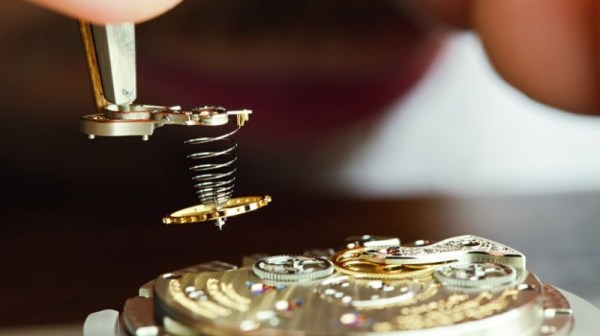Scientists at the Swiss Federal Laboratories for Materials Science and Technology (Empa) recently developed a new technique for growing watch springs to tiny specifications. As it turns out, the creation of watch springs is ripe with opportunity for new materials research.
The technique involves using photo-etching and electrochemical deposition into cold, aqueous solutions. Compared to drawing and winding Nivarox wires, this is a fairly unconventional method for manufacturing. For as long as watchmaking has been around, creating the balance springs has been one of the most difficult parts of the job. The wires must be drawn to a thickness in the hundredths of millimeters and wound and tempered to the exact hardness, ductility, and elasticity while compensating for environmental factors. Many substances change their properties during fabrication, so the Empa team decided to look to pure materials research as a way to find a means for fabricating balance springs that would remain stable.
![]()
They took silicon wafers (the same kind used for solar panels and computer chips), covered them in gold and a thin layer of light sensitive paint, and etched the shape of a spring into the wafer. The wafer was then dipped into a galvanic bath containing a salt solution from a metallic alloy — the spring acts as a cathode so that when an electric current passes through the bath, metal is deposited at the base of the spring. Once the spring is built up, it is dissolved from the mold and examined. After a bit of smoothing, the final spring is washed and sent to a lab for prototype production.
The electroplated springs are currently on display at the Laboratory for Mechanics of Materials and Nanostructures at the Empa campus in Thun, Switzerland. In the meantime, the first pilot tests are being wrapped up, and the team is beginning to work with Swiss watchmakers to see if their springs can hold up inside watch mechanisms.
[Thanks to Qes for the tip!]










